Bi-Annual Evaluation
Evaluation Date
- The Evaluation Date page allows you to set and manage the specific dates for conducting evaluations.
- The Set Evaluation Date button is to choose and schedule a specific date for the evaluation. Please see the image below.
- After clicking the button, a dialog box will appear, displaying a calendar icon on the right side. Click on this calendar icon to choose a specific date from the calendar. This feature used to easily select and set a desired date for the evaluation. Please see the image below.
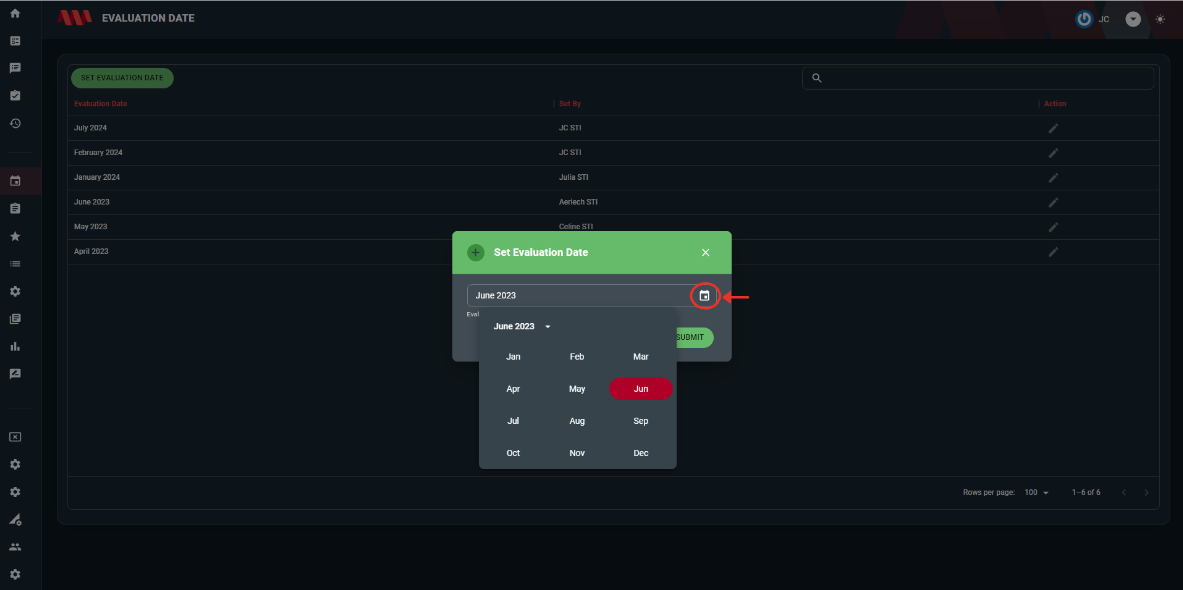
Forms
- The Forms page is where you create and manage evaluation forms. These forms serve as the foundation for the evaluation process and define the structure and criteria for assessments.
- The Add Form button is to create a form to be use as a category for the evaluation. Please see the image below.
- After clicking the button, a dialog box will appear, displaying the following fields:
Form name - In this field, set the name/title of the form that will be use as a category for the evaluation.
Manager Percentage - In this field, specify the percentage weight or importance of the form that will be created for the manager in the evaluation process.
Rank and File Percentage: In this field, indicate the percentage weight or importance of the form that will be created for the rank and file employees in the evaluation process. - Please see the image below.
Accountabilities and Expectations
- Accountabilities and Expectations are the specific responsibilities and expectations that individuals will be evaluated on. In the Accountabilities and Expectations page, you can define and manage these tasks and criteria for evaluation. These accountabilities and expectations align with the evaluation form and provide clarity on what individuals are expected to accomplish.
- The Add Accountability or Expectation button is to create a accountability or expectation under the selected form to be use as a subcategory for the evaluation. Please see the image below.
- After clicking the button, a dialog box will appear, displaying the following fields:
Form name - In this field, select the specific form from the list of forms that have previously created.
Manager Percentage - In this field, create a specific accountability or expectation to add for the selected form. This could include tasks, goals, targets, or any other performance-related expectations. - Please see the image below.
- In the Action column, edit or deactivate are provided. Please see the image below.
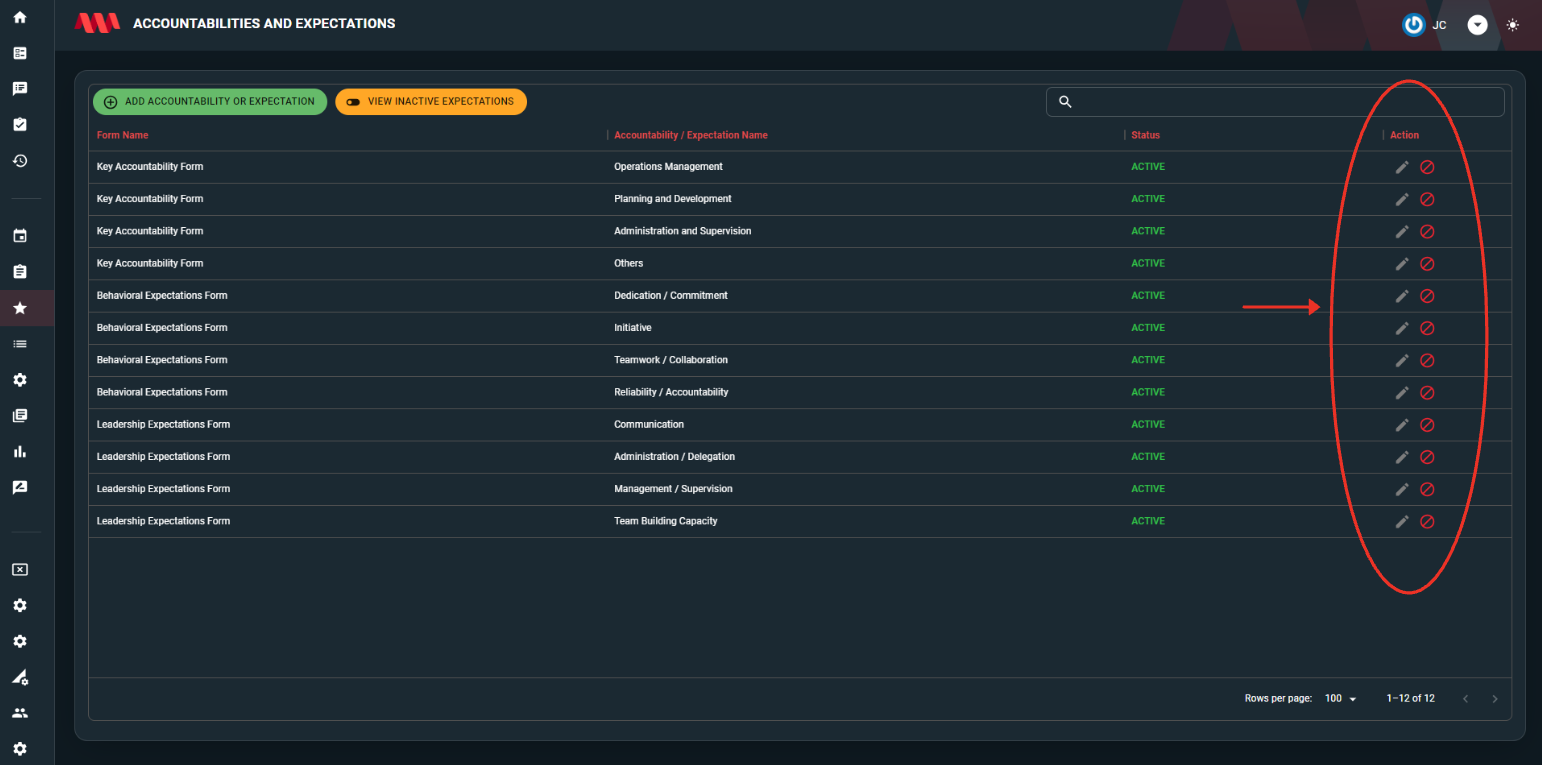
Edit - to modify the details or content of the selected accountability or expectation.
Deactivate - removes the selected accountability or expectation from active use. - The View Inactive Expectations button is to see all the deactivated accountabilities or expectations. Please see the image below.

The activate icon will reactivate and restore its active status. This means that the accountability or expectation will once again be considered and included in the evaluation process.
Specifics
- The Specifics page serves as a platform to provide additional details and information specifically related to the accountabilities and expectations for the evaluation. By utilizing the Add Specifics button, you can include more in-depth information about the specific tasks and responsibilities that individuals will be assessed on during the evaluation process. This feature enhances the clarity and comprehensive understanding of the expectations associated with the evaluation, ensuring a thorough assessment of performance and achievement.
- After clicking the button, a dialog box will appear, displaying the following fields:
Form name - In this field, select the specific form from the list of forms that have been previously created.
Select Department - In this field, choose the relevant department to which the evaluated individual belongs.
Immediate Supervisor - In this field, specify the position of the immediate supervisor of the evaluated individual.
Job Position - In this field, indicate the job position of the evaluated individual.
Evaluatee Job Position Details - In this field, provide additional details about the job position.
Accountability/Expectation - In this field, choose a specific accountability or expectation the have previously created.
Specific - In this field, provide more detailed information about the accountability or expectation. This allows
Percentage - In this field, you can assign a percentage weight or importance to the specific that will be created. This indicates the impact of this particular specific in the overall evaluation process.
- The Delete icon is to delete the selected row.
- The Add Row button is to add a new row in the list.
- The View icon, under the action column, provides the ability to access and review all the data associated with the selected form. Click the View icon to examine the complete set of information and details of the specific form.
-
The Use Previously Made button is to utilize a form that they have previously created. Click the button to access and utilize the specific form they have previously saved or generated within the application.
When the button is clicked, a list or menu will be displayed, presenting the previously created forms.
Settings
- The Settings page is the final step in creating an evaluation form. It allows you to define the necessary details, such as the evaluator and evaluatee, that are essential for the evaluation process.
- By clicking the Add Setting button, you can specify the evaluator and evaluatee, as well as their relevant information, ensuring that the evaluation form meet the specific requirements.
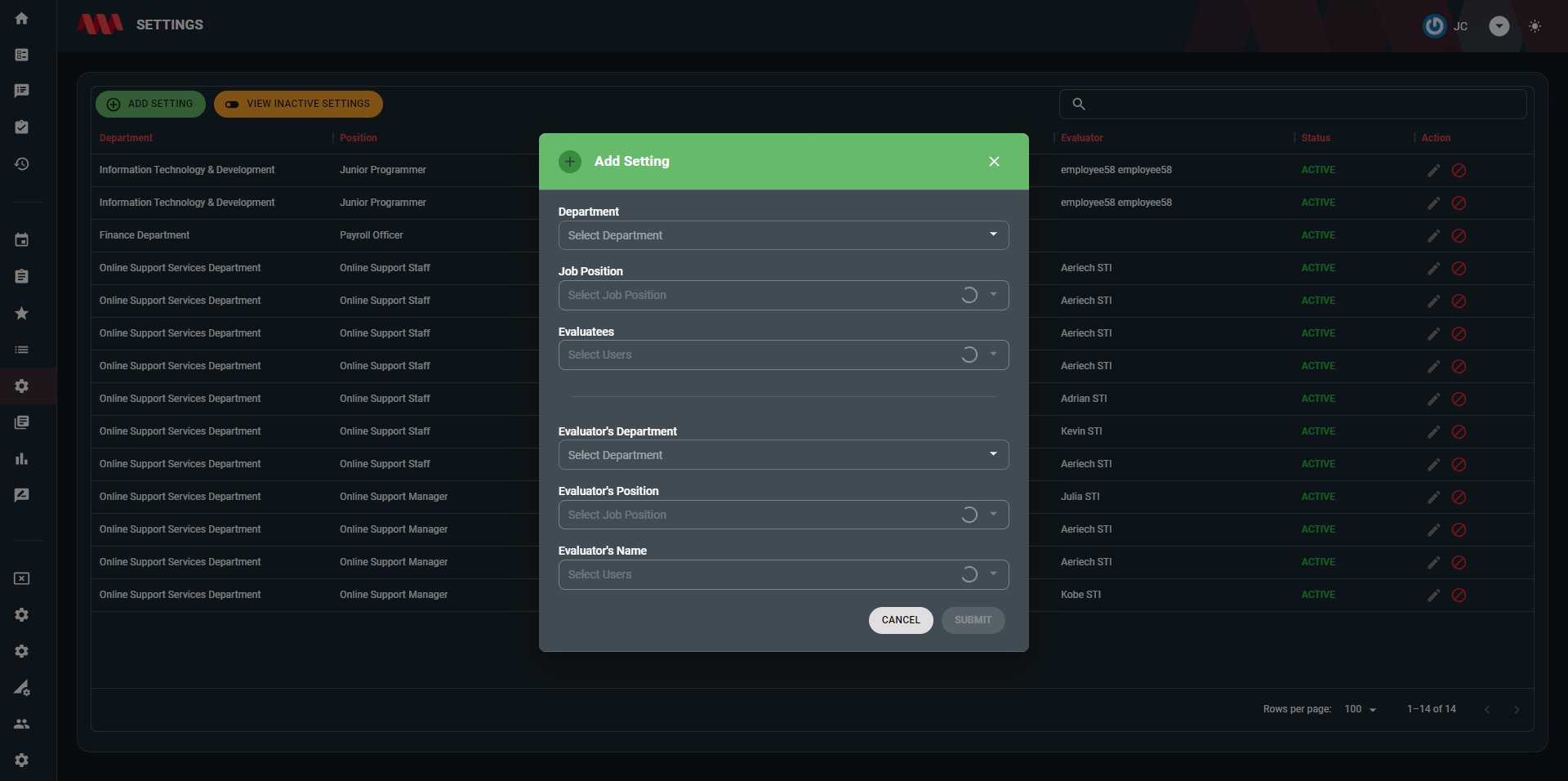
Department - In this field, choose the relevant department of the evaluatee from the available options.
Job Position - In this field, indicate the specific job position of the evaluatee.
Evaluatees - In this field, specify the individual(s) who will be evaluated. This could be one or multiple persons, depending on the evaluation setup. Select them from a list of available options, ensuring that the correct individuals are included in the evaluation process.
Evaluator's Department - In this field, indicate the department to which the evaluator belongs.
Evaluator's Job Position - In this field, specify the job position of the evaluator.
Evaluator's Name- In this field, select the name of the person who will be conducting the evaluation.
- The View Inactive Settings button is to see all the deactivated accountabilities or expectations.
The activate icon will reactivate and restore its active status. This means that the setting will once again be considered and included in the evaluation process.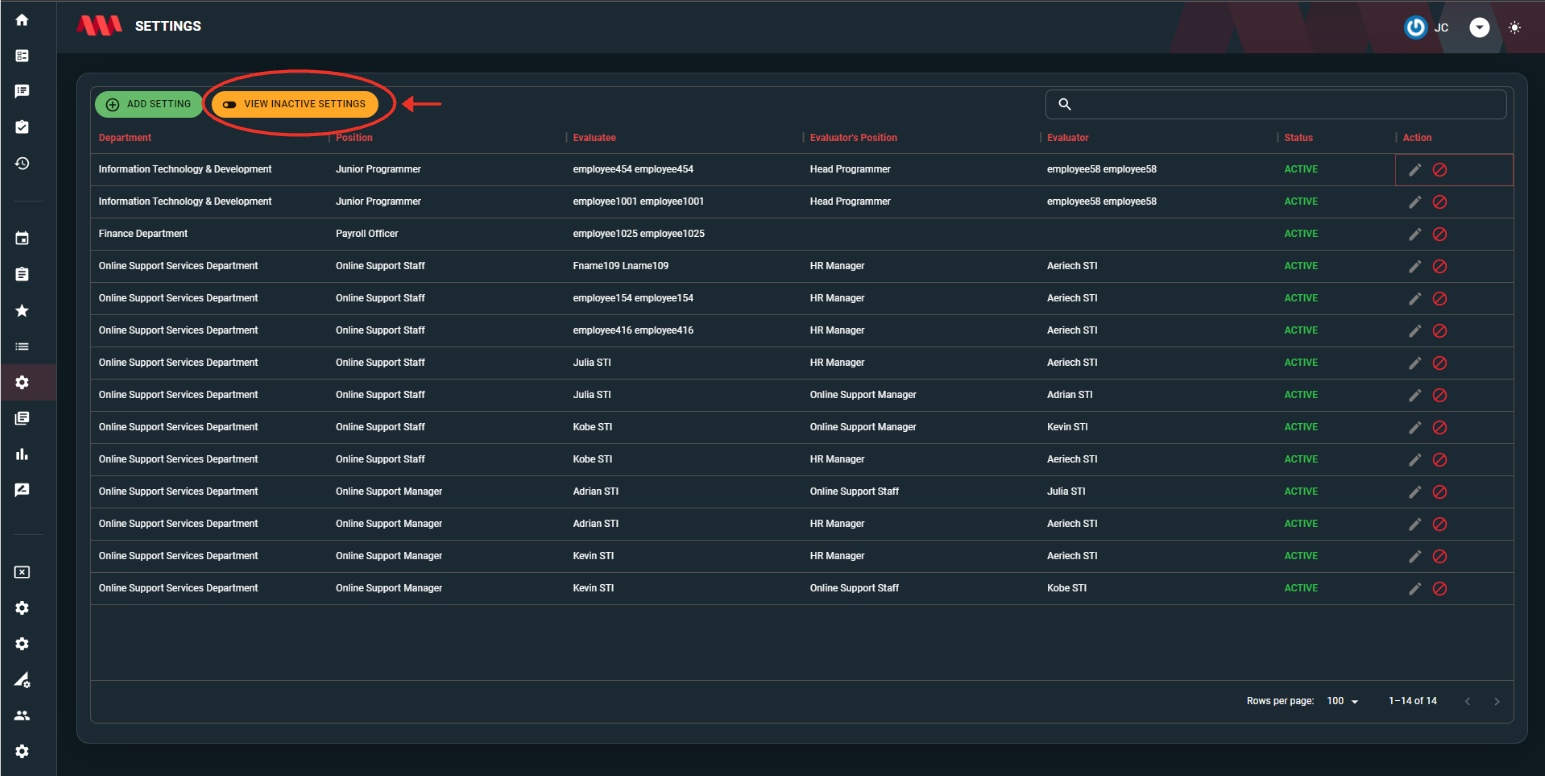
Edit - to modify the details or content of the selected setting.
Deactivate - removes the selected setting from active use.
Monthly Evaluation Summary
- The Monthly Evaluation Summary page provides a comprehensive overview and summary of the monthly evaluations conducted within the specified time period. This page display a table that consists of evaluatee information's such as score for the Specific Tasks. The Monthly Evaluation Results page provides a concise overview of the individuals who have been evaluated by the evaluator.
- Fill in the required fields to generate the desired information.
Evaluation Month: Enter the specific month for which the evaluation conducted.
Evaluator: Specify the name of the evaluator responsible for conducting the evaluation.
Job Position: Indicate the job position of the evaluatee.
- By providing the necessary information in these fields, the Evaluation Application will generate the desired information in the form of a table. The table will display the individual that has been evaluated, along with their corresponding scores for specific tasks or criteria.
Monthly Evaluation Results
- The Monthly Evaluation Results page provides a detailed breakdown and analysis of the evaluation results for the individuals who have been evaluated based on the specified evaluation month, evaluator's position type, and department.
- Fill in the required fields to generate the desired information.
Evaluation Month: Enter the specific month for which the evaluation have been conducted.
Evaluator Position Type: Indicate the type of job position of the evaluator.
Department: Indicate the specific department within the organization to which the evaluation is relevant.
Bi-Annual Results
-
The table on the Bi-Annual Results page displays the individuals who have been evaluated during the specified Evaluation Month and Evaluator Position Type. It includes the names of the evaluated individuals, their final average scores, department information, and relevant actions.
The purpose of this table is to provide an overview of the evaluation results for the selected evaluation month and evaluator position type. It allows you to easily identify and compare the performance of the evaluated individuals based on their average scores and associated departments.
-
In the Bi-Annual Results section, you will need to fill in the required fields to generate the desired information related to the bi-annual evaluation.
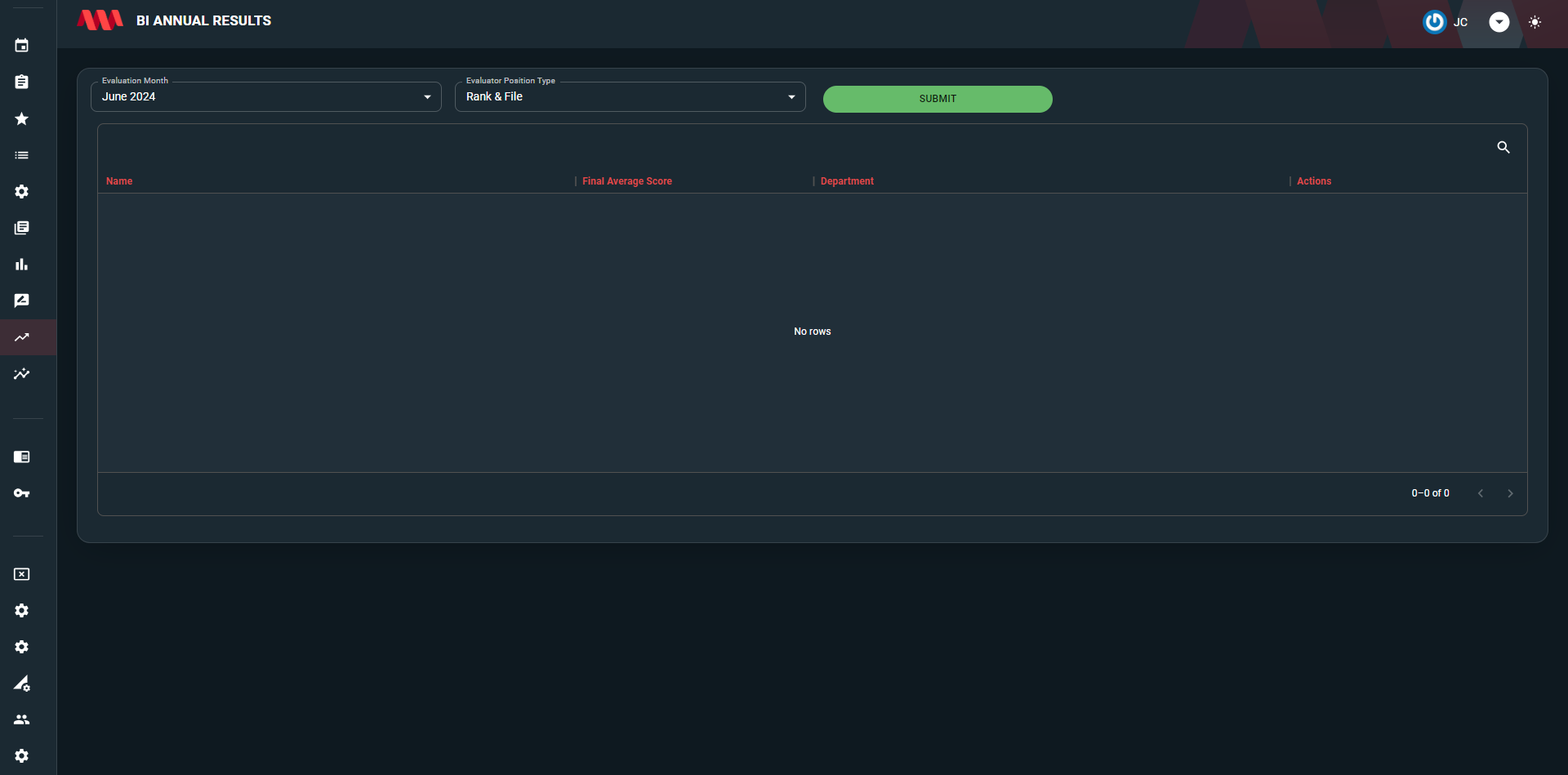
Evaluation Month - This field allows you to specify the specific month for which you want to generate the bi-annual evaluation results. It helps in filtering the data and focusing on evaluations conducted during a particular month or time frame. By selecting the appropriate evaluation month, you can ensure that the results displayed or generated are specific to that period.
Evaluator Position Type - This field refers to the position or role of the evaluator who conducted the evaluations. It helps in categorizing or differentiating the evaluations based on the evaluator's position within the organization. By selecting a specific evaluator position type, you can filter the results and view evaluations conducted by evaluators holding that particular position.

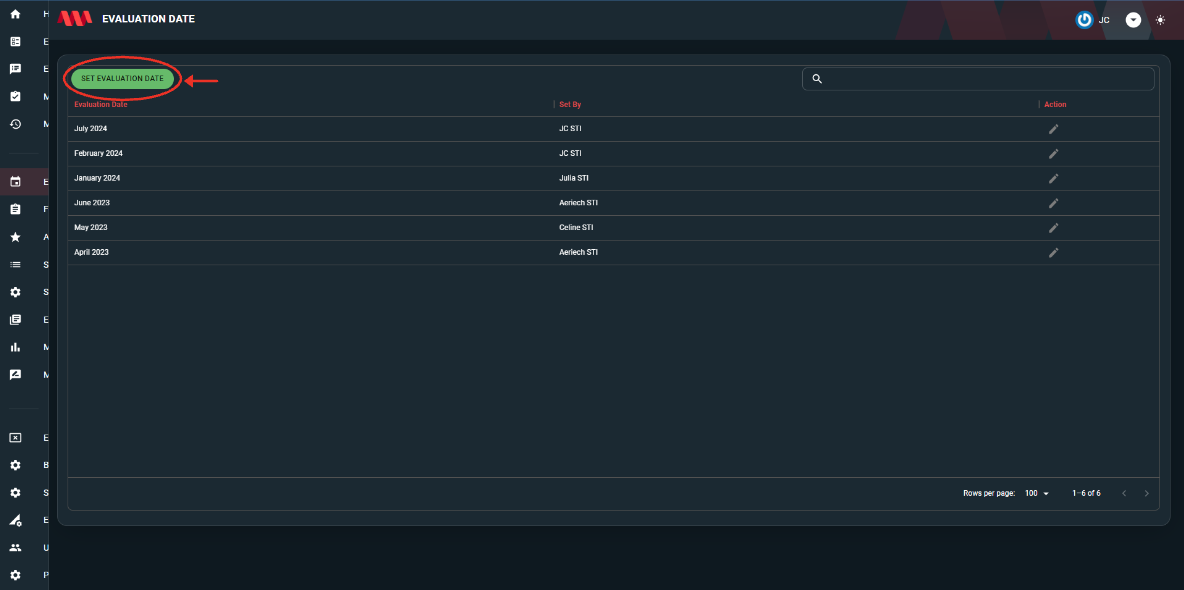

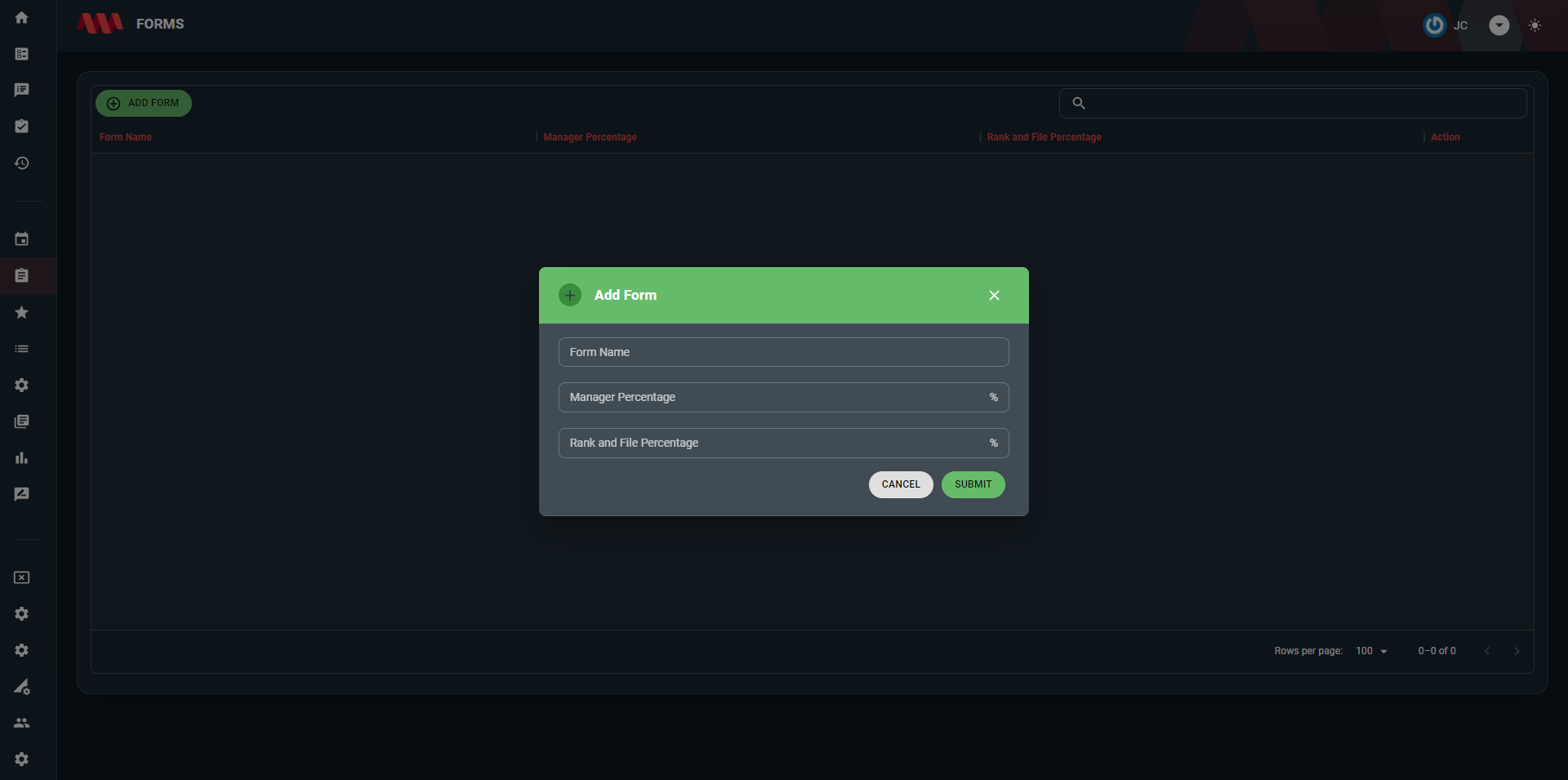

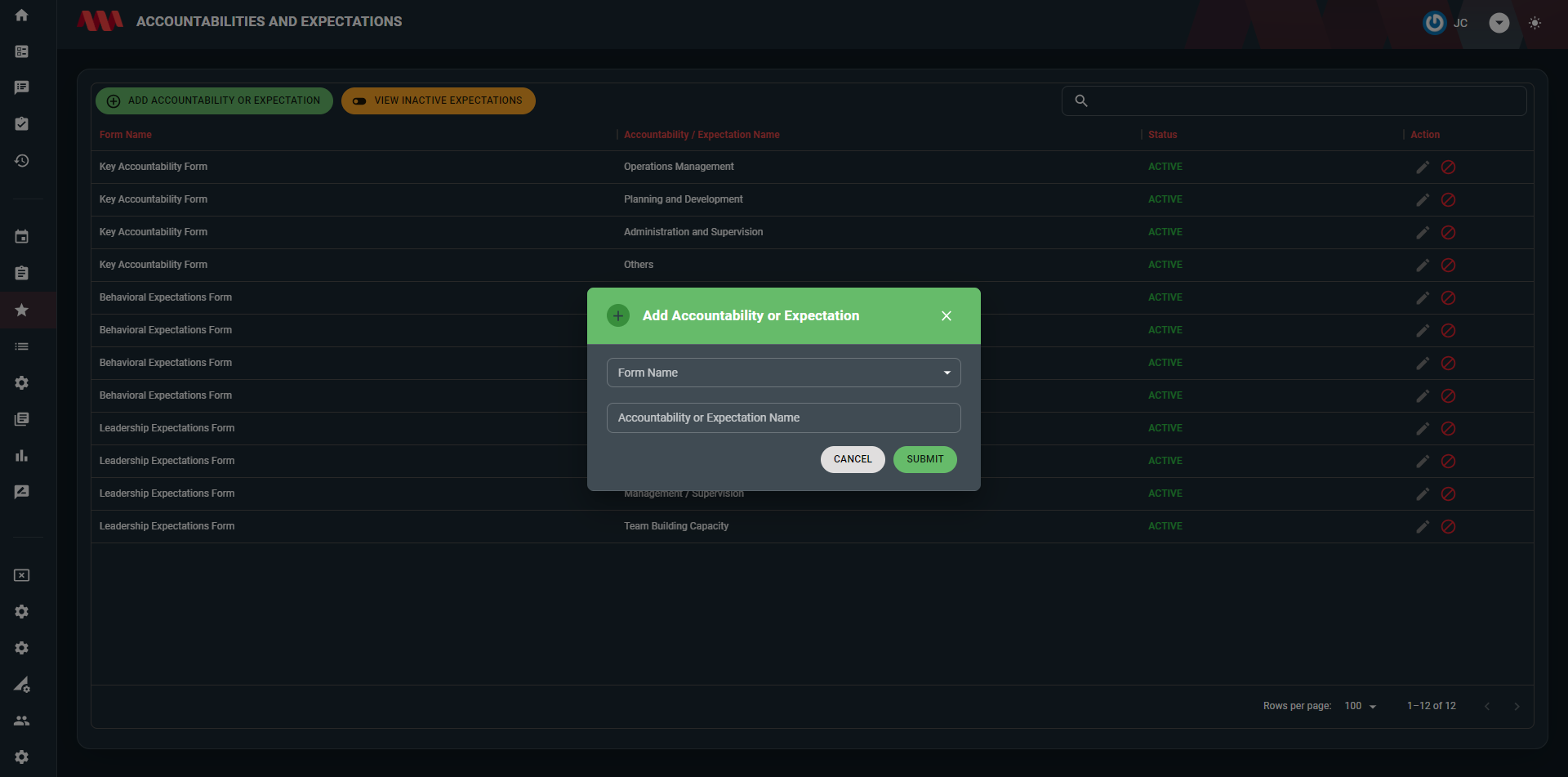
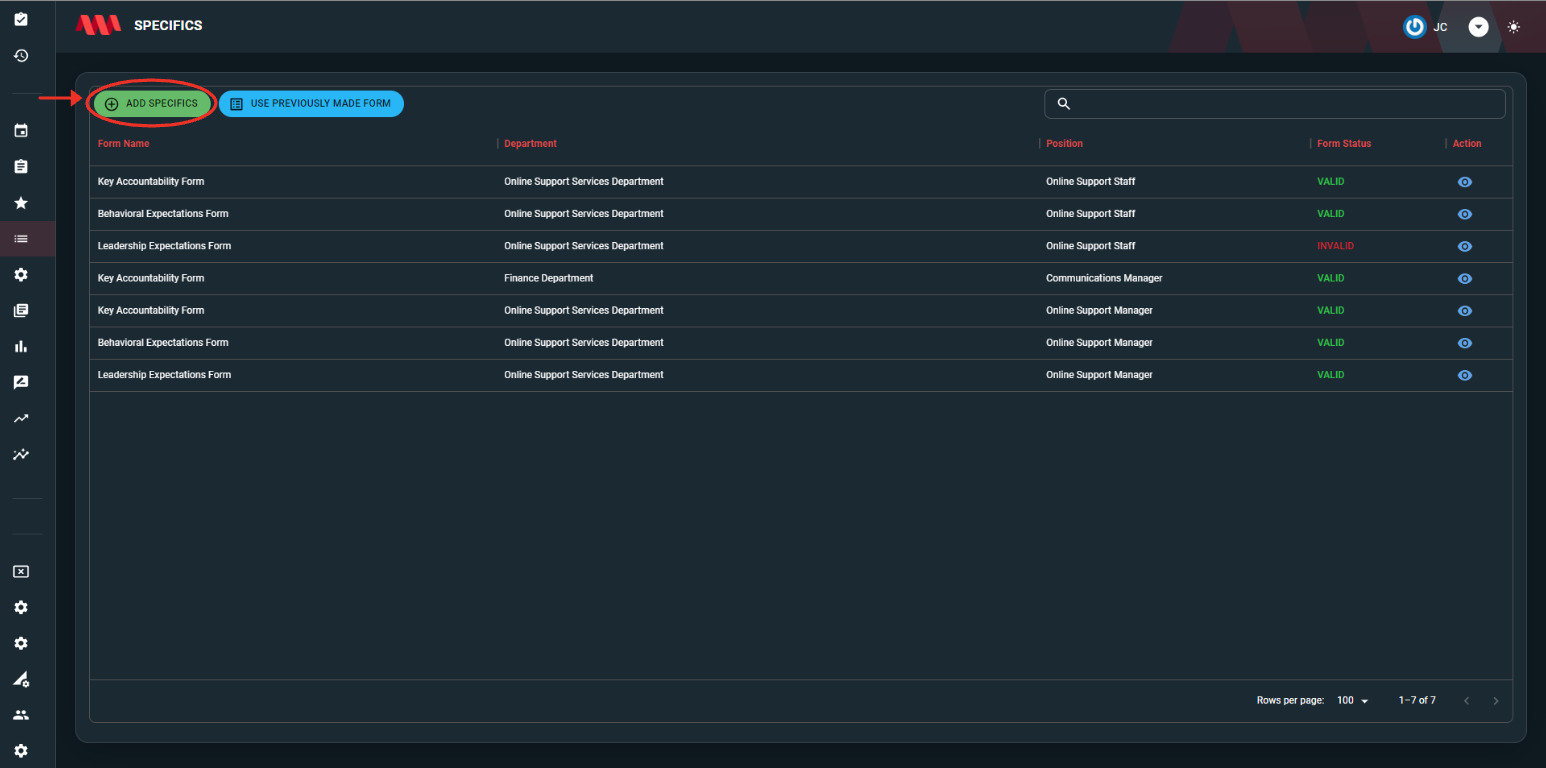
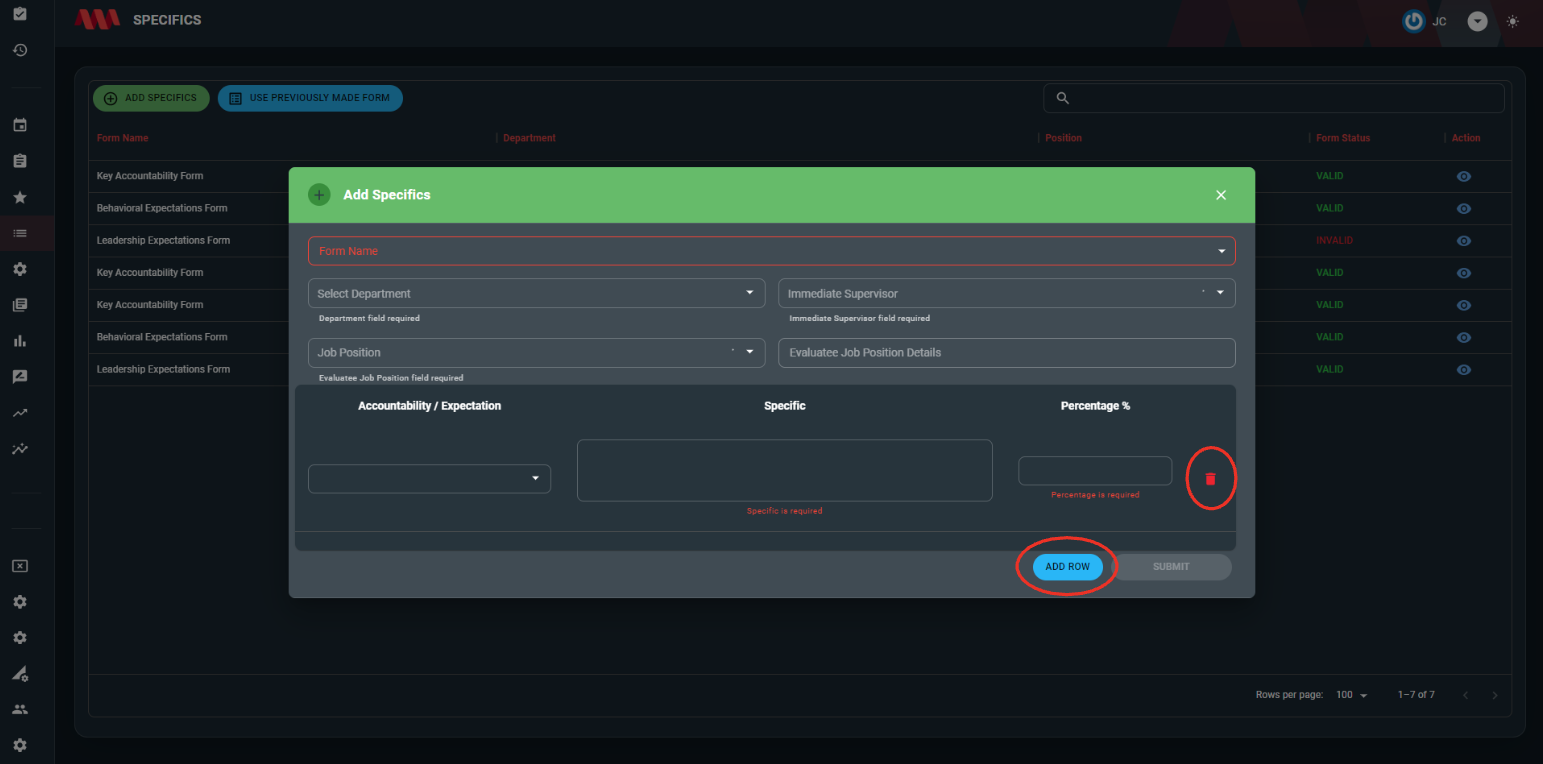
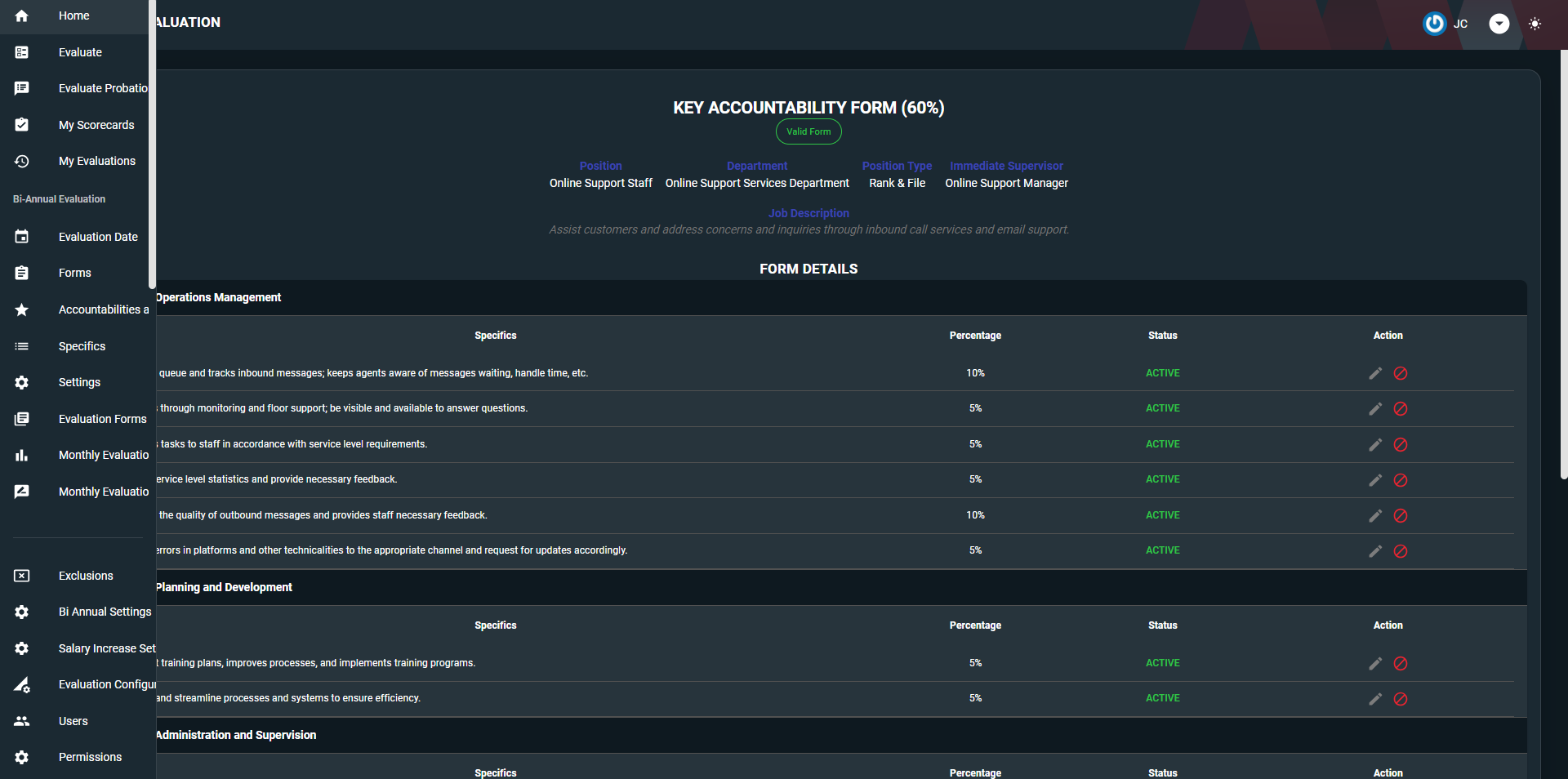
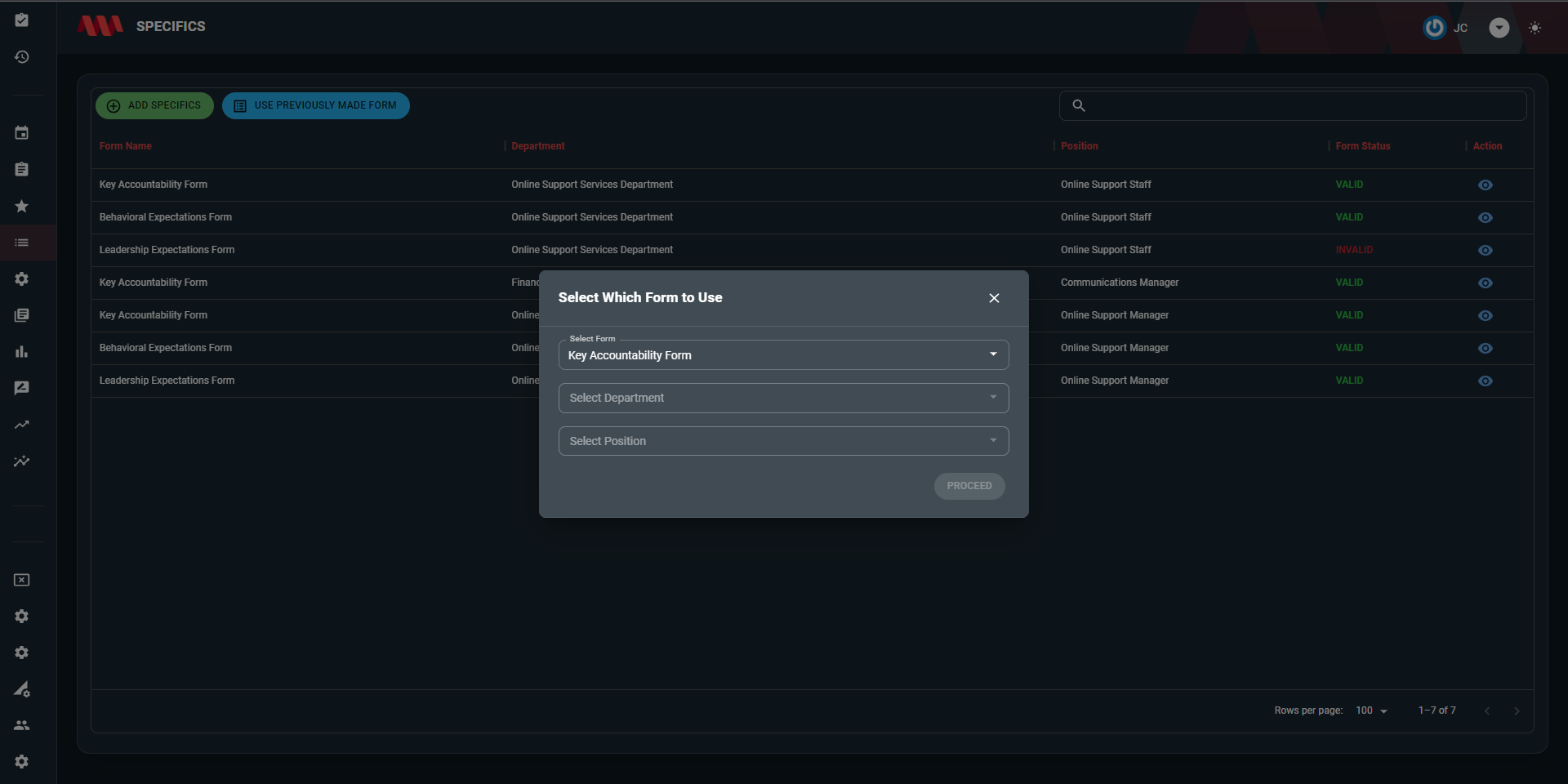

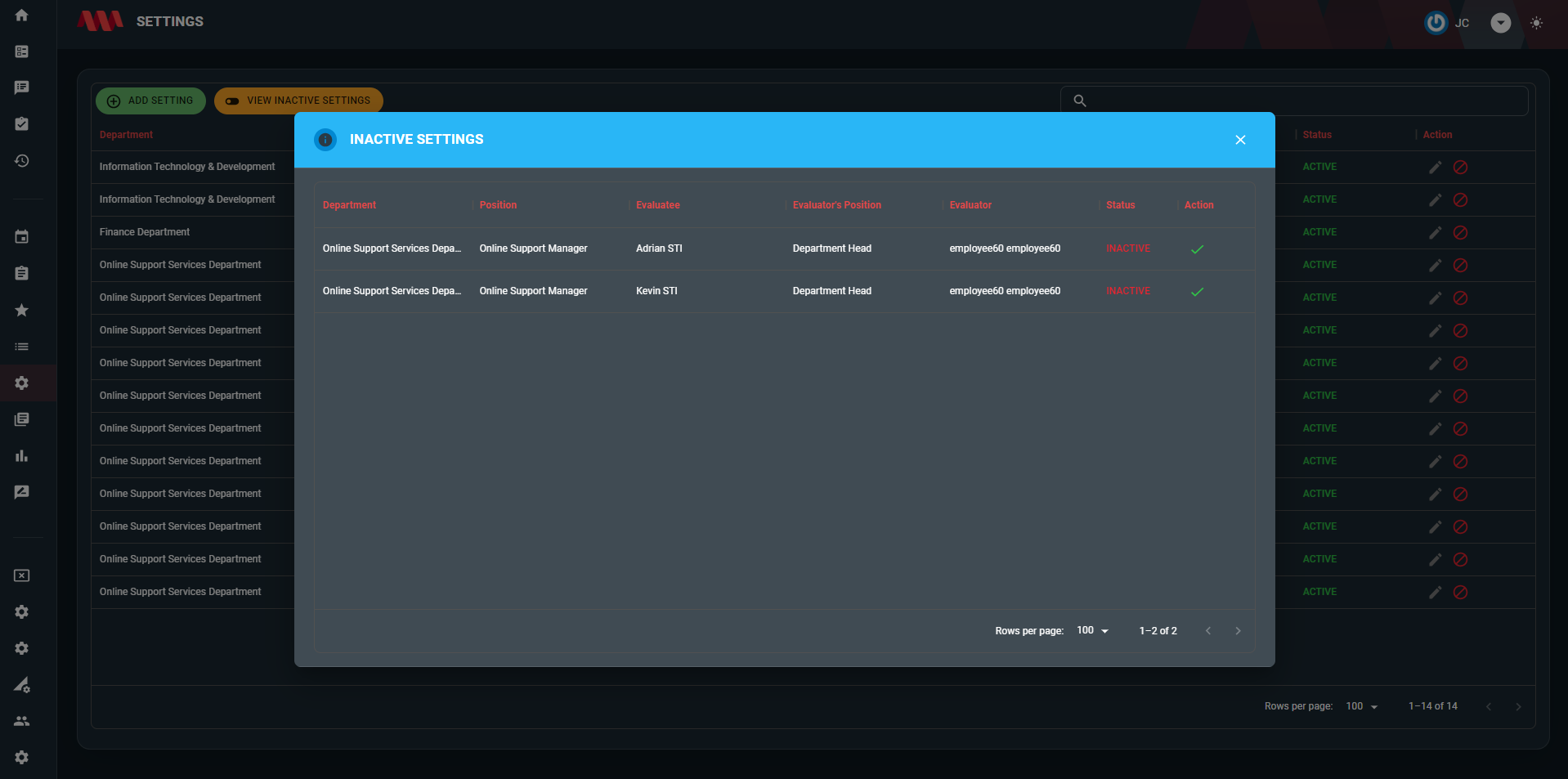
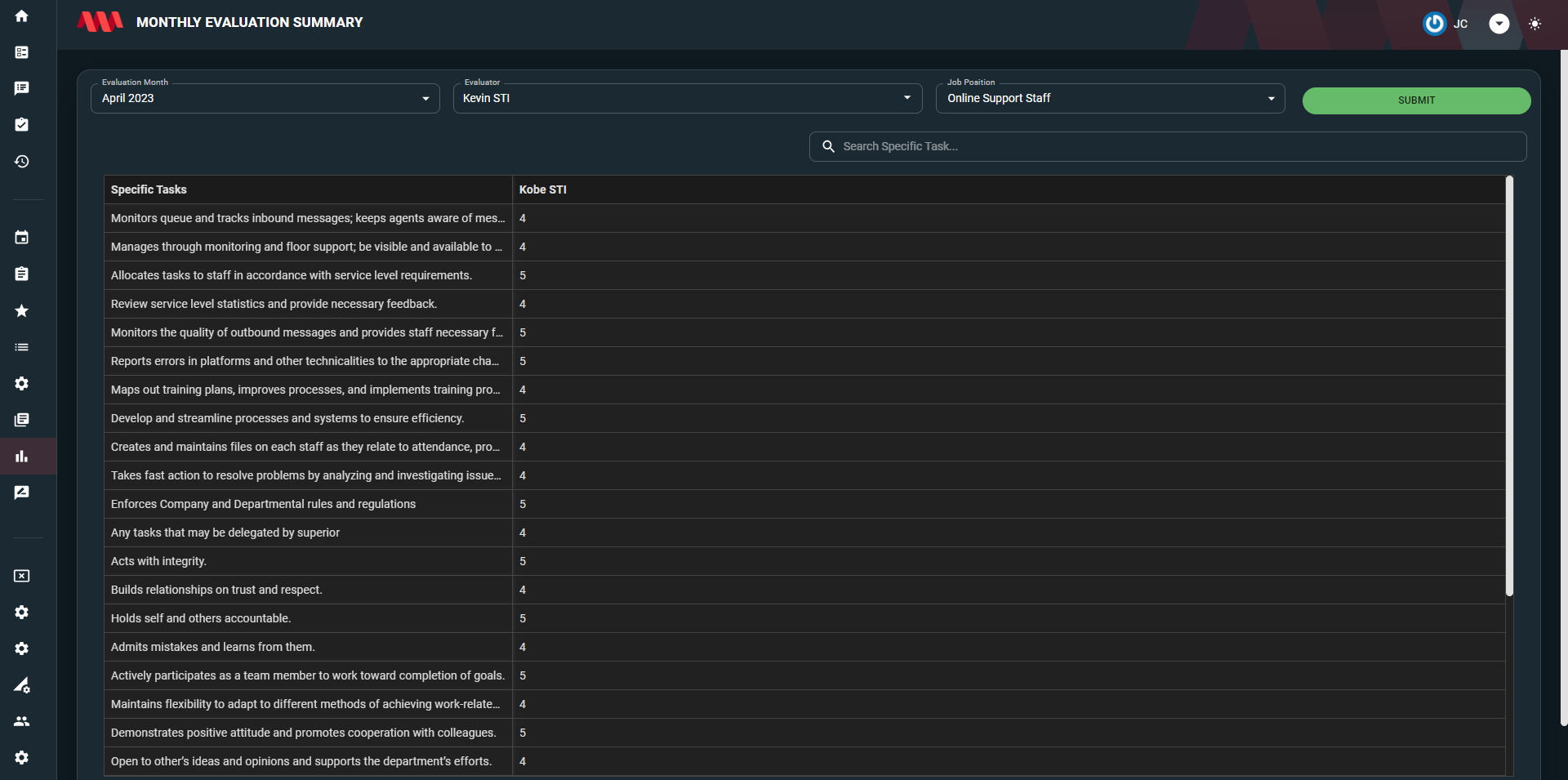
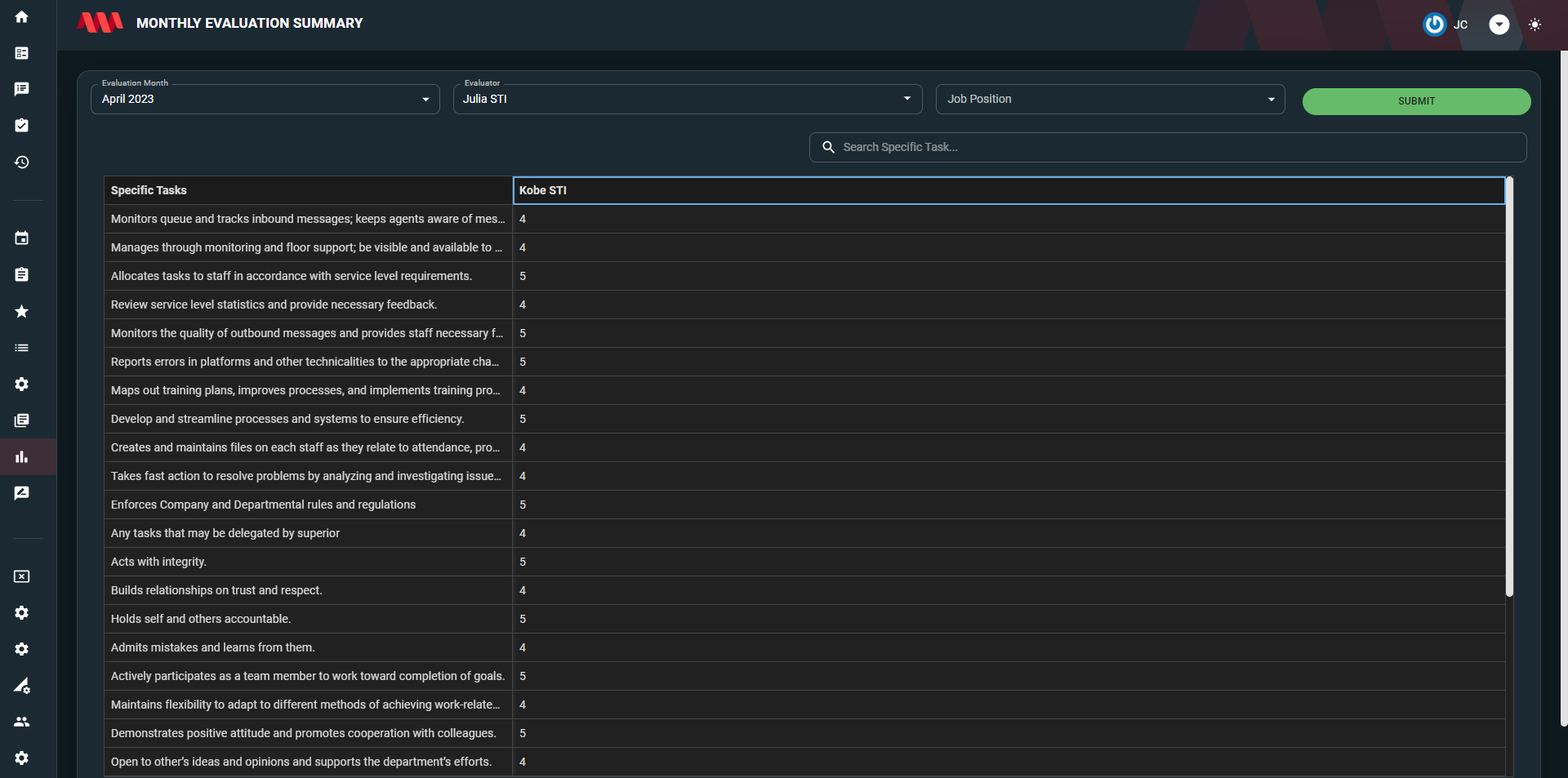

No Comments